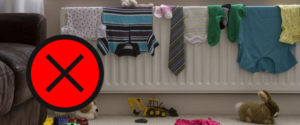Condensation – it’s not all bad.
Just remember that iconic scene from Titanic!… No? Just us? Ok then.
Winter in Scotland can get right into the marrow of the bones. Cold air sneaking into the flat, seemingly impossible to keep warm. Then you wake in the morning to…well, condensation. Here’s some tips to make sure you keep toasty warm in your home without getting the clammy condensation and, bonus, no nasty mould either.
What is condensation you ask?
Well, condensation is the most common form of damp in rented properties. It appears when excess moisture in the air comes into contact with a cold surface, such as a window or a cold wall (the water collects as droplets on the cold surface). It can lead to mould growth and tends to be worse in winter.
How is it caused?
It can be caused by a tenant not ventilating or heating heir home properly and the source of condensation can be from cooking, drying wet clothes, steam coming from the bathroom(s), along with properties being kept too cold over winter months. These can all cause moisture to enter the air and then turn to water when it faces the cold, dark world lurking just outside the window. Brr.
Preventing condensation by keeping the home toasty
The first precaution for tenants to take is to make sure they have a nicely heated home 24/7, also through the cold months (say October to March), keeping the temperature around 15 degrees or more. This keeps the surfaces in the property warm, and this will thereby avoid the air dropping in temperature when meeting the surfaces. It also keeps the property warm and ready to heat tenants up much quicker when they get home.
How to avoid condensation when cooking, showering & drying clothes
First of all it is important to have a continuous flow of air through the property; this can be done by regularly opening windows to let air in (and let moisture sneak out). When cooking, tenants should remember to turn on the extractor hood, and not to let the kettle boil longer than necessary. Pans can also be covered to avoid steam coming out and those tenant masterchefs should open their windows a little when cooking to let steam escape from the property nice and easily.
When showering, tenants should close the door so as not to let the steam into other rooms, and make sure that the bathroom fans are turned on. Umega tenants, if the bathroom fan isn’t working, let us know and we’ll get on it right away.
Another big contributor to causing condensation is drying clothes as it gives off steam, so it is advisable for tenants to dry clothes outdoors or in a dryer and avoid drying clothes draped over airing frames within the property.
If in spite of the precautions, moisture is still continuously forming on windows or walls, tenants should regularly wipe them down to avoid moisture build up. It might also be worth investing in a dehumidifier to catch the moisture in the air.
And this is where it starts to get a whole lot Uglier – Mould…
The ugly side to condensation happens when internal condensation isn’t dealt with and water starts to build up. If this happens, it can create black mould, most commonly around window frames or in bathrooms between tiles. In bad cases, it can also form as proper mould on the ceiling or the walls. It’s important to treat the mould as soon as it appears, to avoid it getting out of control. Tenants might invest in a fungicidal wash but they should always test on a small area first and read the manufacturers instructions carefully. Another option is to mix chlorine bleach and water (1 part bleach and 3 parts water), and wipe the mix on the blackened surface then rinse it and let it dry. But once again, better to check on a small area first.
If you’re a Umega tenant and have condensation building up in the property and are unsure how to tackle it, don’t panic! Just email your Relationship Manager and we’d be happy to talk you through some solutions that have worked for us.

